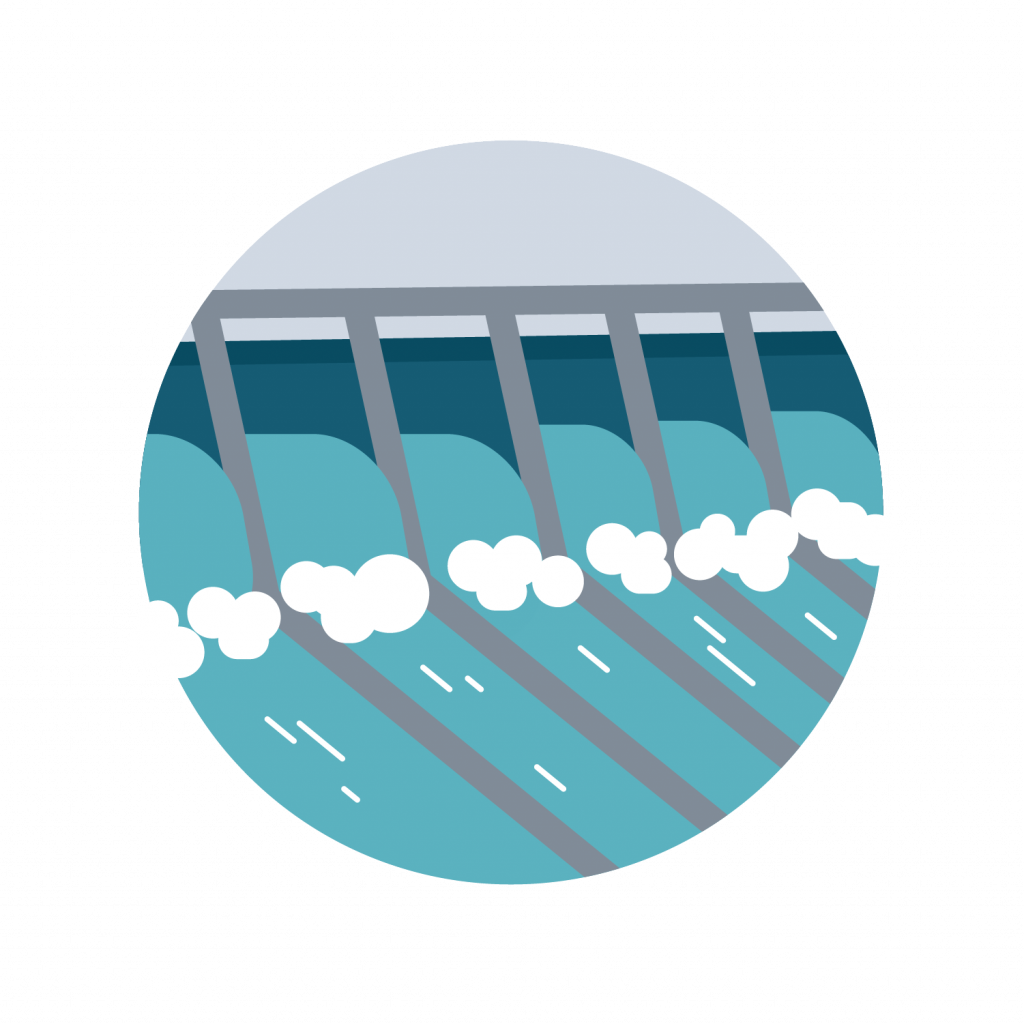Follow the Drop – Hydro Power Plant

Hydro Power Plant
Your choice to travel to the hydro power plant is extremely useful for the people living in the Bow River Watershed. This is because people rely on hydro power plants to create some of the energy needed for everyday tasks, such as turning on lights, using hair dryers, and powering up computers.
Hydroelectric power is typically produced by dams. Dams store water behind them, creating a pool of water called a reservoir. When power is needed, water is allowed to pass through the dam to the other side. When water passes through the dam, it pushes a turbine which generates electricity. The greater the height of the dam, the more energy that can be produced.
Although important for creating energy, dams can have a significant impact on river ecosystems. For example, fish cannot migrate upstream to lay eggs, cold water species cannot thrive, and plants and sandy areas that require new sediment and nutrients do not receive them.
As for water quality, hydroelectric power generation does not add or remove contaminants from the river. Large reservoirs, do, however, change the water quality flowing downstream in several ways:
- The temperature of the water, unmoving in the reservoir, can be quite different than the natural river temperature.
- Sediment, which is important for downstream ecosystems, is removed from rivers by reservoirs.
- Oxygen levels can be much lower in the reservoir water than in the upstream river water. This can be unhealthy for aquatic life living in the reservoir area and can cause complications to the downstream ecosystem1.
Fun Fact
Dams store water behind them: Many lakes and reservoirs are created or raised by the damming of naturally flowing streams. Examples you may have heard of include the Spray Lakes, Two Jack Lake, the Kananaskis lakes, Ghost Reservoir, the Glenmore reservoirs, and Chestermere Lake.

Definition
Turbine: A machine for producing continuous power by making a wheel or rotor revolve by a fast-moving flow of water, steam, gas, air, or other fluid.
Where next?
Despite the negatives associated with hydro power plants, some dams in Alberta create higher water quality in our rivers by releasing stored water that dilutes wastewater or other inputs downstream.
Although water is not directly consumed by the generation of hydroelectric power, significantly more evaporation occurs from the large surface of a reservoir compared to the surface of a river. Evaporation is therefore one of your next options. You can also choose to flow through a turbine and continue your journey downstream into the middle section of the Bow River.
Learn more about energy in Alberta on the Nexus Energy page.
References and Further Reading
- Energy Education. (2018). Water quality degradation from hydropower. Retrieved May 21, 2020, from https://energyeducation.ca/encyclopedia/Water_quality_degradation_from_hydropower
